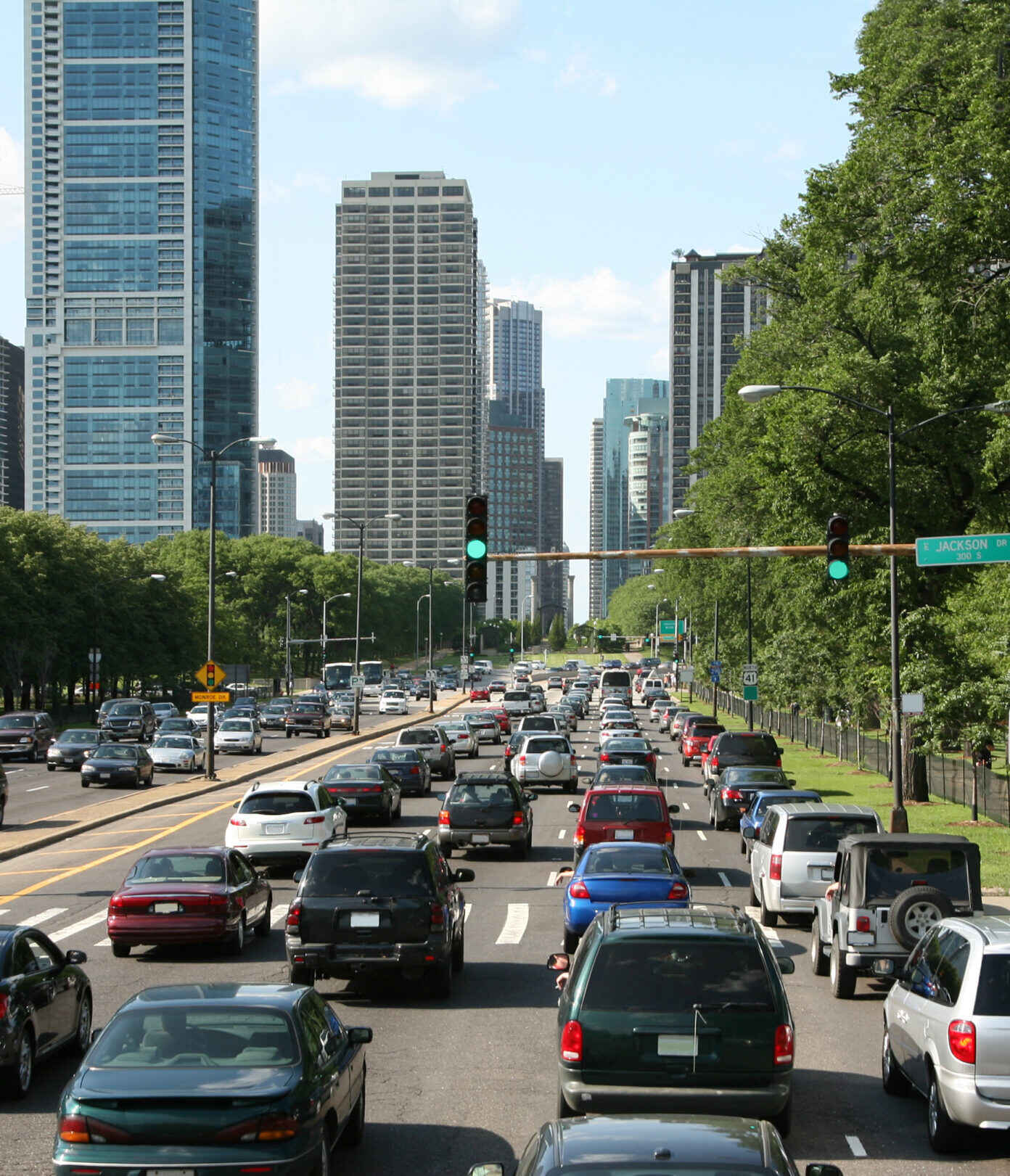Merging Lanes: Bringing the Environmental Impacts of Driving to New Driver Education
July 24, 2024
Overview
Since its inception, graduated driver licensing has focused on minimizing the prevalence of motor vehicle crashes caused by new drivers, reducing related injuries and property damage. Some states have made another important addition to their driver education program—the impact of vehicle emissions on air quality.

Since its inception, graduated driver licensing (GDL) has focused on minimizing the prevalence of motor vehicle crashes caused by new drivers, reducing related injuries and property damage. Every state has some form of GDL and all include driver education, which teaches new drivers how their actions operating a vehicle can impact those around them from a safety perspective. States also use driver education to deliver important information on the responsibilities associated with owning and driving a vehicle beyond safety factors.
For example, many states’ required curriculum now includes financial topics that are outside the scope of vehicle operation, but are essential for new drivers to understand. Some states have made another important addition to their driver education program—the impact of vehicle emissions on air quality.
Motor vehicles are one of the most significant sources of air pollution, emitting pollutants that both form smog and contribute to climate change. While significant improvements to vehicle efficiency have led to a decline in these pollutants, there are still an estimated 125 million people living in areas where air pollution levels are considered unhealthy. The smog-forming pollutants from motor vehicles have been associated with asthma, acute respiratory illness, and reduced lung capacity.
One way of addressing personal vehicle emissions is to educate individuals on how vehicle choice, maintenance, and driving behaviors can reduce harmful air pollution. For example, there is evidence that idling in a personal vehicle wastes fuel, emits excess pollutants, and can be particularly harmful in places like a school parking lot with many children. Other fuel-efficient behaviors like avoiding aggressive driving and observing the speed limit go hand-in-hand with safe driving practices; teaching both the safety and environmental benefits of these behaviors offers new drivers multiple reasons to be mindful on the road.
There are also vehicle practices that can protect drivers from pollutants entering their car while driving in high-traffic areas, such as maintaining cabin air filters, closing car windows when sitting in traffic, and recirculating cabin air. These practical tips can be seamlessly incorporated into existing driving education programs to spread information to more drivers. An added bonus is that teens may educate their parents and other older drivers about these practices. In addition, vehicle emission education could help new drivers better understand the paradoxical burden of air pollution on those who do not drive. Equipping new drivers with the most updated information on the environmental impact of vehicles can help more drivers understand how to protect themselves and others from the effects of bad air quality.
Utah offers a good example; the state began mandating education on the harmful effects of vehicle emissions and how drivers can improve air quality as part of their driver education program in 2018. The Utah driver’s manual also includes EPA-recommended emissions reduction practices, and even encourages drivers to consider commuting, teleworking, and biking or walking when and where appropriate.
In Virginia, teaching fuel-efficient driving practices is also required as part of the curriculum. While the law is broad, the Virginia Board of Education driver education standards detail that new drivers must be able to evaluate the advantages and disadvantages of vehicles with different emission profiles, understand the environmental impact of different transportation options, examine the health risks of air pollution, and demonstrate an understanding of “green driving practices.”
In California, state law requires that driver training vehicles have instrumentation with fuel efficiency and fuel consumption information and driver education instructors must be informed on fuel-efficient driving practices. Although fuel efficiency is not a listed component in California’s driver education law, green driving is included in the California driver manual.
For states that do not include vehicle emissions, air quality, or fuel efficiency in their driver education law, many do include fuel efficiency in their curriculum guidelines. The American Driver and Traffic Safety Education Association National Curriculum Standards, meant to guide states in developing their curriculum, also includes a section on developing student understanding of fuel-efficient vehicles and driving practices.
Despite fuel efficiency being included in many state education guidelines based on this national standard, students need information beyond fuel efficiency to make broader transportation choices for the health of themselves and others. Developing new drivers’ understanding of their role in contributing to air pollution and ensuring that this education is part of the required state curriculum is important for states to address both driver safety and air quality.
This article was written by Katherine Schutes, Staff Attorney, Network for Public Health Law, Eastern Region, under the supervision of Kathleen Hoke, Director, Network for Public Health Law, Eastern Region.
The Network for Public Health Law provides information and technical assistance on issues related to public health. The Network for Public Health Law promotes public health through non-partisan educational resources and technical assistance. This document is provided for informational purposes only and does not constitute legal advice or legal representation. Neither provision of this document nor any communications with the Network for Public Health Law and its staff create an attorney-client relationship. For legal advice, please contact your attorney. Support for the Network is provided by the Robert Wood Johnson Foundation (RWJF). The views expressed in this post do not represent the views of (and should not be attributed to) RWJF.
